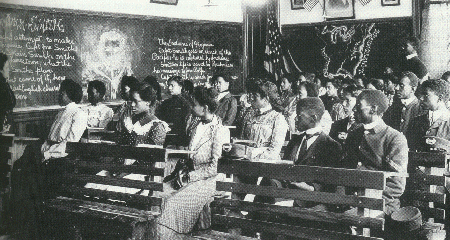
Education During Segregation

Since 1935, the National Association for the Advancement of Colored People (NAACP) has been working to end segregation. The NAACP advocates for equal treatment of African Americans everywhere in the United States. In the 1950's, the NAACP fought hard to integrate schools. Thurgood Marshall led the fight.
Southern states sent white children and African American children to different schools. Southern lawmakers said the schools were equal. The schools, however, were not equal. Many African American children had to walk miles to their schools. They had to share books because there were not enough for all students. Teachers were poorly trained and classrooms were overcrowded.
For white children, things were different. For the most part, they lived closer to their schools. Each child had a book. Teachers were better trained and classes were smaller.
The government did
nothing to help the inequality between the schools. Tax money collected
by the city paid for public school education, but the money spent was not
the same or even close. The white schools received on average $148
per child in comparison to $43 per black child. This left millions
of black children at a great disadvantage. As a last resort, many
blacks moved North or sent their children North to be educated in a better
enviornment. This "separate but equal" doctrine provided a legal
foundation for segregation in the South that lasted for more than 50 years.

During the Jim Crow Era, the laws set up to discriminate aginst blacks were rarely challenged. But over time the frustration grew and parents began to fight for equal schools. The most famous case is the Brown v. Board of Education. Thurgood Marshall and the NAACP argued the case before the U.S. Supreme Court after being ruled against in the courts in Topeka, Kansas. He argued that racial segregation went against the Fourteenth Amendment to the Constitution, which promised "equal protection under the law" and the Supreme Court agreed. The ruling was announced in 1954 and the U.S. Supreme Court said that public schools must desegregate.
  |
|
|
|
|
|
|
|
|
|
|
|
|
|
|
|
|
Learn More:
African-American History:
Take a quiz